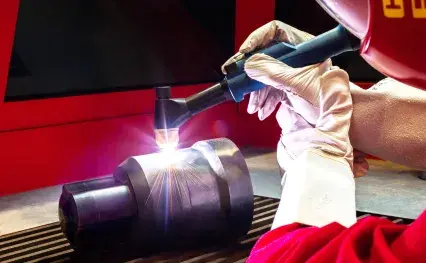
Lowest dilution, heat input, distortions

Minimal dilution of the base material, readily automated, easily controlled welding bead means for you high quality and wear resistant coatings in a wide variety of alloys. Excellent for series production. In the PTA process, the plasma is focused while forced through the heat resistant anode, causing a considerable increase of the arc density, energy and temperature. The welding filler alloy, in microatomised powder or cold wire form, is conveyed into the plasma arc column where a shielding gas protects the weld pool from the atmosphere. Castolin has developed special powders for GAP applications supported by a complete high-quality GAP equipment range.
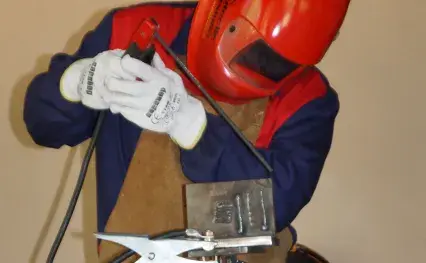
Effective even underwater or on windy, stormy weather

When an arc is struck between the flux coated electrode and the workpiece, both the core wire and the workpiece surface melt to form a weld pool. Simultaneous melting of the flux coating on the rod will form gas and slag which protects the weld pool from the surrounding atmosphere. The slag will solidify and cool and must be chipped off the weld bead once the weld run is complete (or before the next weld pass deposit). Castolin has developed the special EutecTrode® alloy range of low heat input electrodes for industrial wearfacing, repair and joining applications supported by a complete high quality, MMA welding equipment range based on latest technology.
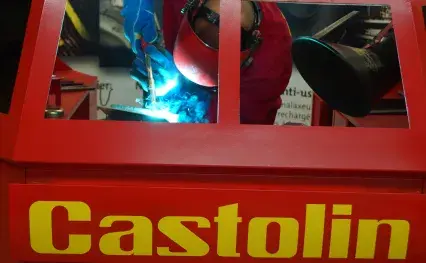
Clean, efficient and easy to learn

MIG is similar to MMA in that heat is produced by forming an arc between a metal electrode and the workpiece. The electrode melts to form the bead. The main differences are that the metal electrode is a small diameter wire fed from a spool and an externally supplied shielding gas is necessary. As the wire is continuously fed, the process is often referred to as semi-automatic welding. The pulse mode was developed as a means of stabilizing the arc at low current values below the threshold level, to avoid short-circuiting and spatter. Metal transfer is achieved by applying pulses of current, each pulse having sufficient force to detach a droplet. Castolin has developed the special EnDOtec® (cored wire) and CastoMag® (solid wire) alloy ranges for industrial wearfacing, repair and joining applications supported by a complete high quality, MIG / MAG welding equipment range based on latest technology.
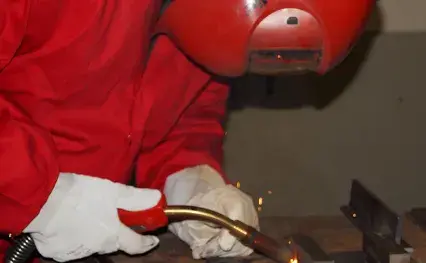
High quality deposits at great speed

Open arc continuous electrodes consist of an outer strip of special alloy, the core of which is packed with a high density of micro-elements. The design makes it possible to obtain high quality deposits at great speed, for coating resistant to all types of wear, as well as for joining. Within this technology a variety of alloys of different formulation can be produced. Castolin Eutectic has developed the special self-shielded TeroMatec® (flux cored wire) alloy range of low heat input electrodes and the TeroMatec 400 wire feeder for industrial wearfacing, repair and joining applications.
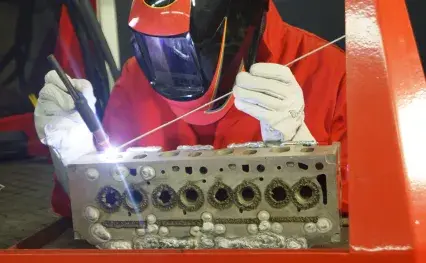
A high degree of operator skill required

In the TIG process the arc is formed between a pointed tungsten electrode and the workpiece in an inert atmosphere of argon or helium. The small intense arc provided by the pointed electrode is ideal for high quality and precision welding. As the tungsten electrode is not consumed during welding, the heat of the arc will melt the base metal and a separate filler rod can be added into the weld pool if required. Castolin has developed the special CastoTig® alloy range for industrial wearfacing, repair and joining applications supported by a complete CastoTIG® welding equipment range based on latest technology.

A cost-effective technology

Plasma cutting has always been seen as an alternative to the oxy-fuel process. However, the important difference between the two processes is that while the oxygen-fuel process oxidises the metal and the heat from the exothermic reaction melts the metal, the plasma process operates by using the heat from the arc to melt the metal. The ability to melt the metal without oxidation is essential when cutting metals, such as stainless steel, which form high temperatures oxides. Plasma is an effective means of cutting thin and thick materials alike. Handheld torches can usually cut up to 2 in (48mm) thick steel plate, and more powerful computer-controlled torches can pierce and cut steel up to 12 inches (300mm) thick. Castolin Eutectic has developed a complete high-quality Plasma cutting equipment range called AirJet based on the latest technology.




